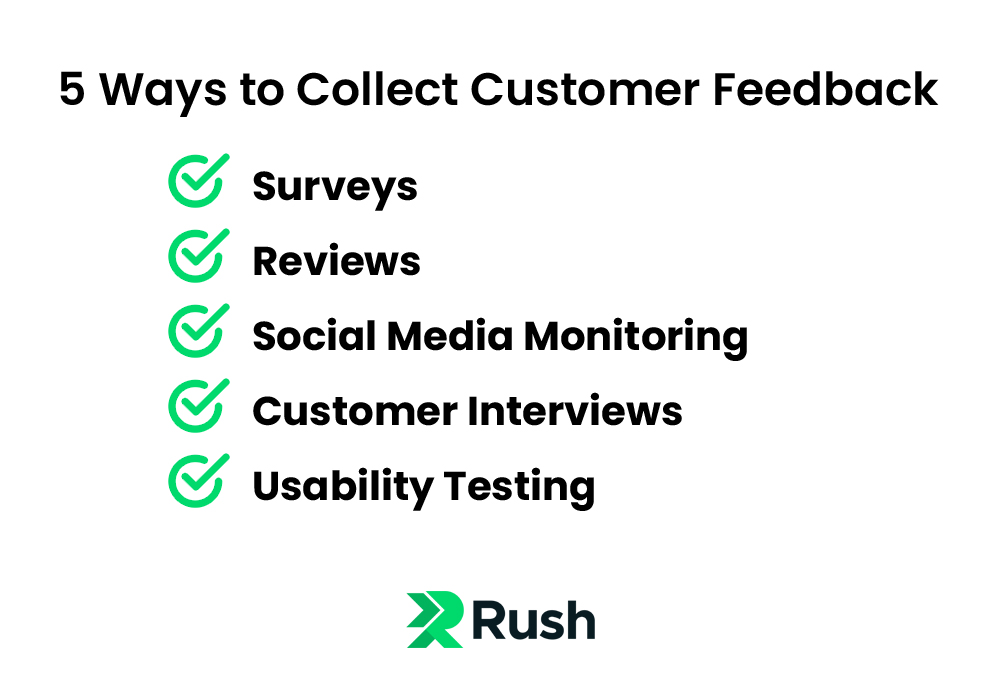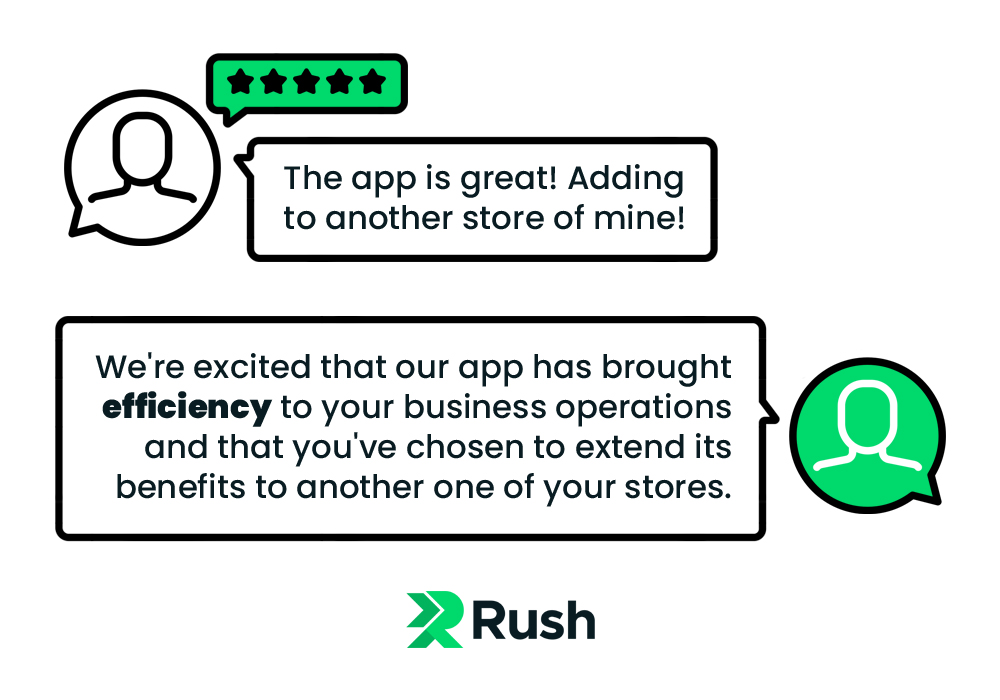In the eCommerce world, the customer is king. What they feel and think about your product or services, or the overall shopping experience, impacts the overall business revenue.
Customer feedback or reviews are a common source of knowing how your brand/store is doing. An estimated 80% of 1,000 respondents in the 2021 Harvard Business Review cited customer feedback as a crucial factor.
But how can you turn customer feedback around and improve your business?
Let’s dive into the details of how to incorporate customer reviews and feedback in your eCommerce strategy.
Quick Summary
Why Do You Need Customer Feedback for Business Growth
Connecting with customers over digital platforms minimizes the occasions of direct interaction — making it a bit challenging to know and assess how business is doing.
There are only a few checkpoints where customers can share their views about the eCommerce store, such as after making a purchase or via social media.
Customer feedback provides insight into customer satisfaction levels. It clears up the cloud and helps you identify where you need to grow and what is working well.
Not just eCommerce businesses, reviews, and feedback are also used by consumers to make buying decisions.
According to the Local Consumer Review Survey, 2023, 98% of consumers occasionally read online reviews when searching local businesses, while 76% of people always or regularly read them.
Positive reviews and feedback demonstrate that customers are satisfied with your products, services, and any interaction with your business.
Plus, the existing feedback and how your business responds to it determines the brand's reputation. 88% of consumers are likely to use a business if they see a business owner responding to all reviews, positive or negative.
Reviews and feedback from previous customers and how you respond to them facilitate trust in potential customers. If incorporated well, feedback can help you address customer issues, reduce churn, and increase conversions with a solid base of loyal customers.
How to Collect Customer Feedback
Collecting feedback from customers is crucial and should be done from the beginning. However, you have to be clear on why you need feedback. Being clear on your intentions can help you design things better.
Here are several ways to collect customer feedback. However, each option suits a different case scenario and preferences. Pick what suits you best.

Surveys and Questionnaires
Surveys and questionnaires are the most commonly used ways to collect customer feedback. They usually include sending the questionnaire or survey through email.
However, the key to getting effective data is not getting carried away with too many questions. An effective questionnaire should contain no more than 15 to 20 questions and should take 3 to 5 minutes to complete — without killing interest.
There are three main types of surveys and questionnaires.
Depending on your end goal, you can pick one type. However, make sure that questions are clear and straightforward.
It is best to go with questions that are directly related to what you are trying to measure. Keep a mix of multiple-choice, Likert scale, and open-ended questions to gather useful qualitative and quantitative data.
Send out these surveys to your customers through their preferred channels. You can use email, website pop-ups, and social channels and collect feedback in-store.
The best time to send a survey is immediately after a purchase or interaction. It helps capture a fresh impression. Periodic surveys — surveys conducted quarterly or annually — can also be used to measure changes in customer satisfaction over time.
Customer Reviews and Testimonials
Reviews and testimonials add credibility to your brand image. How your existing customers found your product or service impacts the buying decisions of your potential customers.
Under reviews and testimonials, star rating is the most basic form of review. A high star rating indicates a high customer satisfaction rate, which can nurture loyalty and trust.
Written reviews are also important as they cover various aspects of the customer experience. According to a 2021 report by PowerReviews, over 99.9% of customers read online reviews before making a purchase.
Some eCommerce stores use video testimonials as they are highly engaging and can convey emotions effectively, with more authenticity.
You can send automated post-purchase emails after a customer has received and used the product. Offer small incentives like discounts or freebies to encourage reviews.
To get the most out of reviews, display them on product pages website, and use them in your social media marketing campaign.
Social Media Monitoring
Social media platforms are a great option to learn about your target audience’s perception of your brand. By keeping track of likes, shares, and comments, you can gain insights into customer engagement and the effectiveness of your marketing campaigns.
eCommerce businesses should keep track of
This can be done by using any social media monitoring tools like
While the data can be too much to handle if you are clear on your objectives and know what you are looking for — brand sentiments, customer complaints, or campaign performance — you can make use of it.
As all platforms are different and target a different set of demographic audiences, you need to identify where your audience is most active.
Social media monitoring is about understanding your customer's expectations of your business. By actively monitoring social conversations, you can gain insights into customer preferences, brand perceptions, and market trends.
Customer Interviews
Customer interviews — a goldmine of data — can offer nuanced insights that are hard to get through any other form of surveys or social media monitoring.
By conducting interviews with thoughtful questions and analyzing the data, eCommerce stores can make informed decisions.
The qualitative data extracted from interviews can reveal deep insights into customer behavior, preferences, and pain points.
You can conduct any of the following types of interviews.
Use a mix of open-ended and closed-ended questions for balance and keep it friendly. However, do not forget your objectives.
Usability Testing
Usability testing is used to understand user behavior and preferences. How your customer interacts with the eCommerce site or app directly impacts sales, cart abandonment rates, and customer loyalty.
Testing can reveal your website’s performance on how easily users can find products, navigate categories, and use search functions. A user-friendly website with a swift checkout process can improve conversion.
Customer feedback on your website or app performance can be collected in the development stage, after the site is fully developed, and on a yearly basis to know if things are going the right way.
With gathered data, you can improve your website and eCommerce app to offer a better shopping experience.
How to Do Customer Feedback Analysis?

Once you have gathered customer feedback received through different channels, it’s time to extract valuable information from it.
Here is how to do customer feedback analysis.
Once you are done with the customer feedback analysis, create a report that includes refined data and your insights. Use charts and graphs to make things visual and digestible. Develop an action plan, assign tasks to specific teams, and set deadlines.
How to Turn Customer Feedback into Effective Change?
Transforming customer feedback into actionable change is a multi-step process that requires the involvement of various departments.
Measure Business Performance
Identify the target KPIs that are most relevant to your business and can be extracted from the feedback you receive.
For example, some common KPIs can be Customer Satisfaction Score, Net Promoter Score, or you can target a specific metric like cart abandonment rate.
Gather data on where you stand with these KPIs to have a baseline to measure against. Set realistic targets and subtasks for improvement based on the feedback.
Product Analysis and Improvements
For product improvement, not all feedback is worth considering or equally important. Prioritize feedback based on their volume, potential impact, and alignment with your business goal.
Before rolling out major changes, create prototypes and test them with a selected group of customers to gauge the impact. Once you are confident, implement them in the live environment.
Customer Service
From feedback, identify specific areas where your customer service is lacking. Based on the identified issues, train your customer service team for better performance.
Use chatbots and AI to minimize human error and offer stellar customer support. Once you have implemented the change, measure KPIs specific to customer service, like Customer Satisfaction Score (CSAT) or First Response Time.
How to Overcome Challenges in Customer Reviews
Reviews are a double-edged sword. While positive reviews can boost your business, negative reviews can equally harm your reputation.
Here is how to overcome the challenges in customer reviews.
How to Handle Negative Reviews
Negative reviews are opportunities for your eCommerce business to grow. Respond to negative reviews in a timely manner with a positive outlook.
Maintain a professional tone, even if the review is unjust or harsh. Offer a solution to the issue and assist in their desired action, whether it is a refund, a replacement, or any other form of compensation.
Follow up with the customer to ensure they are satisfied and politely ask if they would like to update their review.
Dealing with Fake Reviews
Use analytics and other tools to identify potentially fake reviews. Most review platforms make it easier to report and remove fake reviews.
Though fake reviews can be stressful, you can get rid of them by having an effective system in hand.
Lack of Reviews
Not having enough reviews can also make your brand look suspicious. Offer incentives like discounts or freebies to encourage satisfied customers to leave reviews.
Simplify the review process. Make it as easy as it can be to encourage more customers to leave reviews.
Use automated emails asking for reviews after a customer has received and used your product or service.
Inconsistent Reviews
Different sorts of reviews across different social platforms can damage trust levels. Use tools to monitor reviews across multiple channels to make sure that you are not missing any valuable feedback and have a consistent brand image.
Maintain a consistent response strategy and patterns across all platforms to provide a unified brand image.
Reviews Affecting SEO

Reviews can be optimized for better SEO rankings by using target keywords in response to them. When you resolve issues and mention them in your responses, it shows potential customers and search engines that you are proactive and customer-focused.
Customer Feedback FAQs
How do you incorporate customer feedback into your sales strategy and tactics?
Customer feedback and reviews can help identify common pain points and preferences. It helps refine sales approaches by spotlighting what truly resonates with the audience. This data can guide the customization of sales scripts, the development of targeted promotions, and the timing of sales outreach — making the sales process more effective and customer-centric.
How do you encourage customers to provide feedback?
Encourage customers to provide feedback by offering an incentive and making the process extremely easy for them. Send post-purchase emails in a timely manner and actively ask for reviews by making them feel valued.
How to use customer feedback for business growth?
Feedback helps identify the gaps and pain points in your customer experience, product, and service quality. Based on this data, create an insightful business strategy to optimize your eCommerce store. Showcase positive testimonials as social proof and attract more customers.
How Rush Can Help You Gather Customer Feedback
Rush is an eCommerce app for Shopify store owners. With Rush, it has become easier to ask your customers for feedback. .
As soon as the product gets delivered to the customer’s doorstep, the app updates the status in the system. As a result, an automated loop of post-purchase follow-up messages will begin.
The app will send follow-up messages on the most-used or preferred platform by customers. By reaching out to your customers in an effective and timely manner, you can enhance customer satisfaction and easily receive customer feedback.
